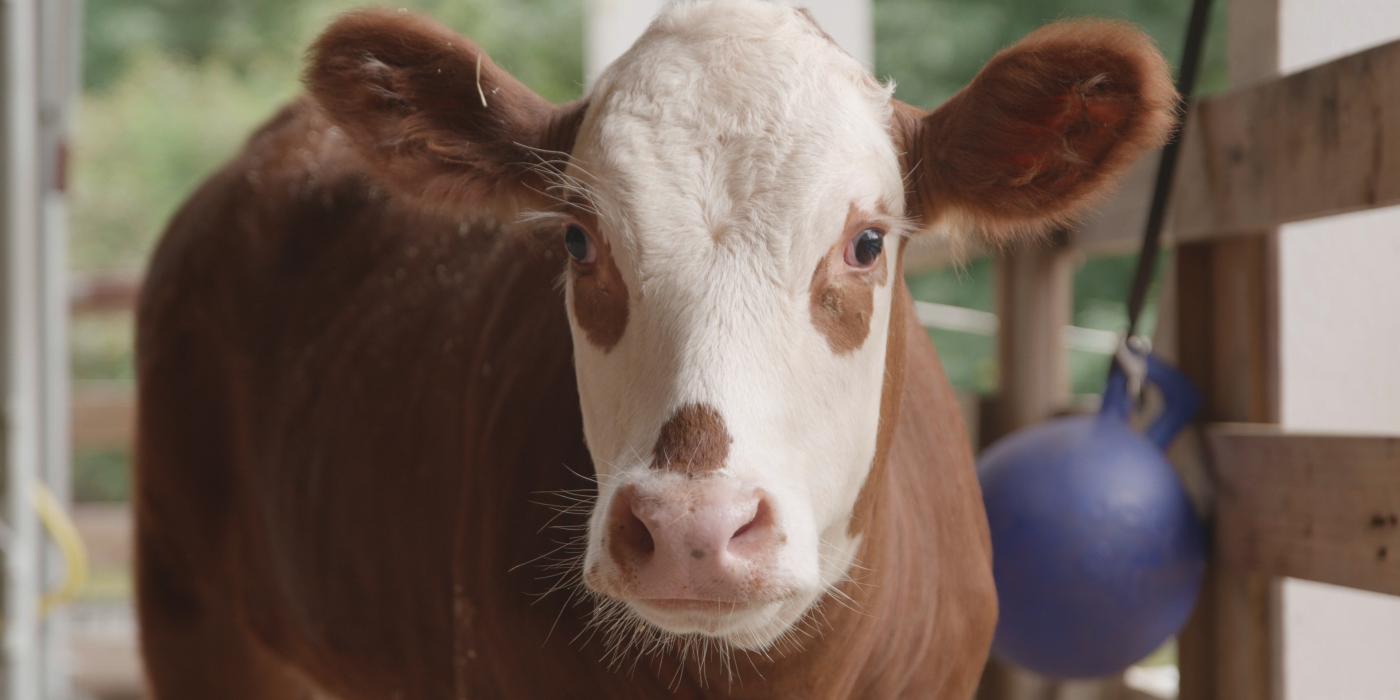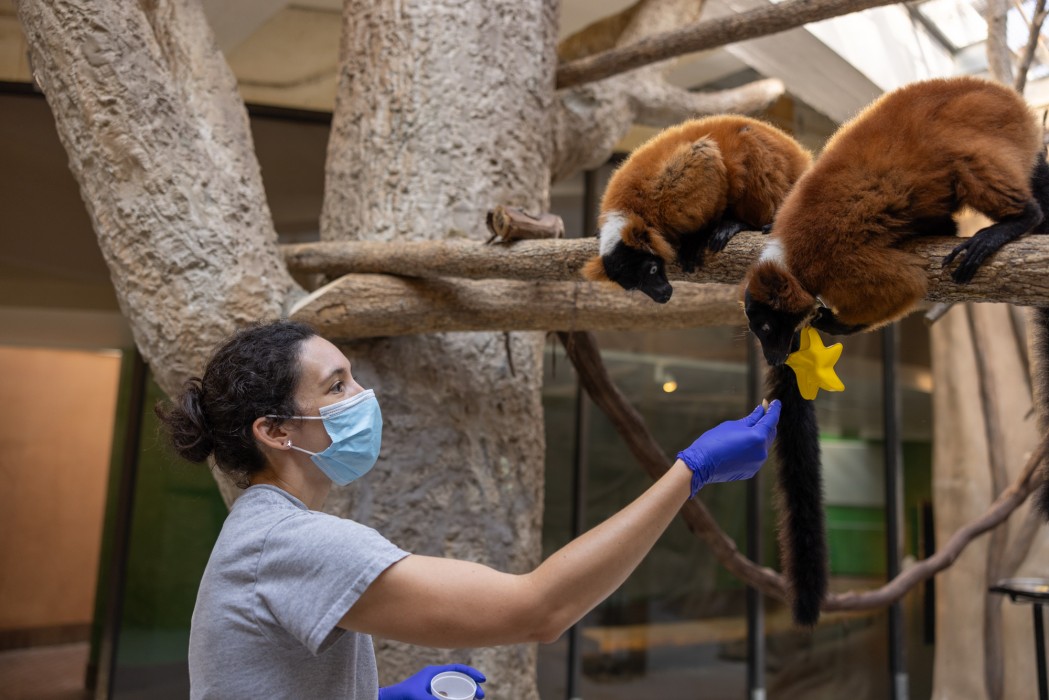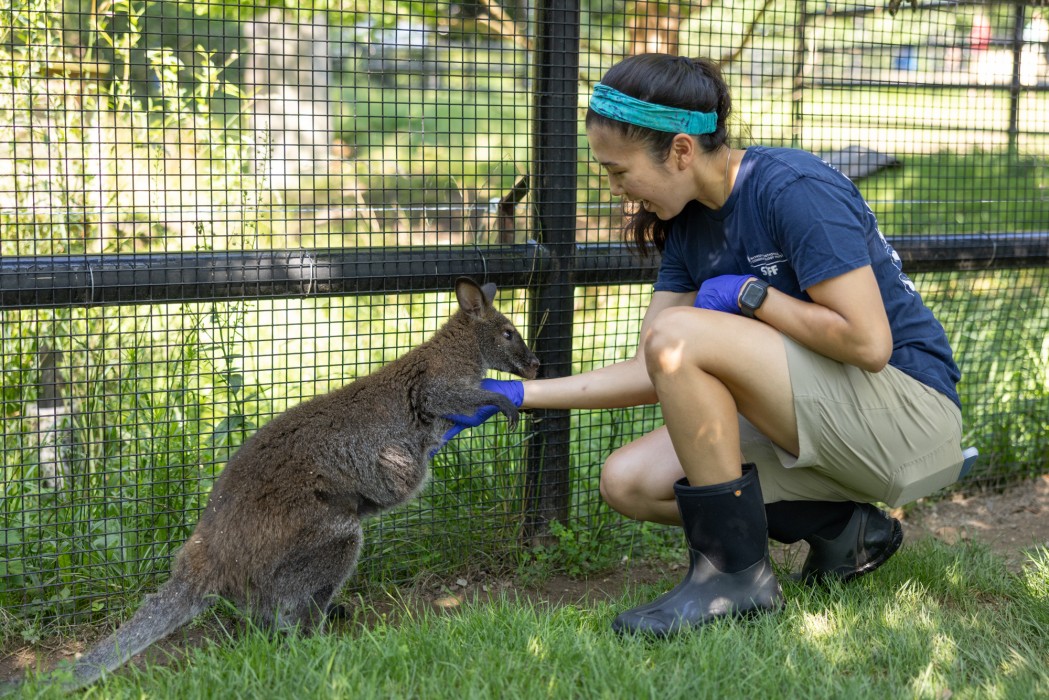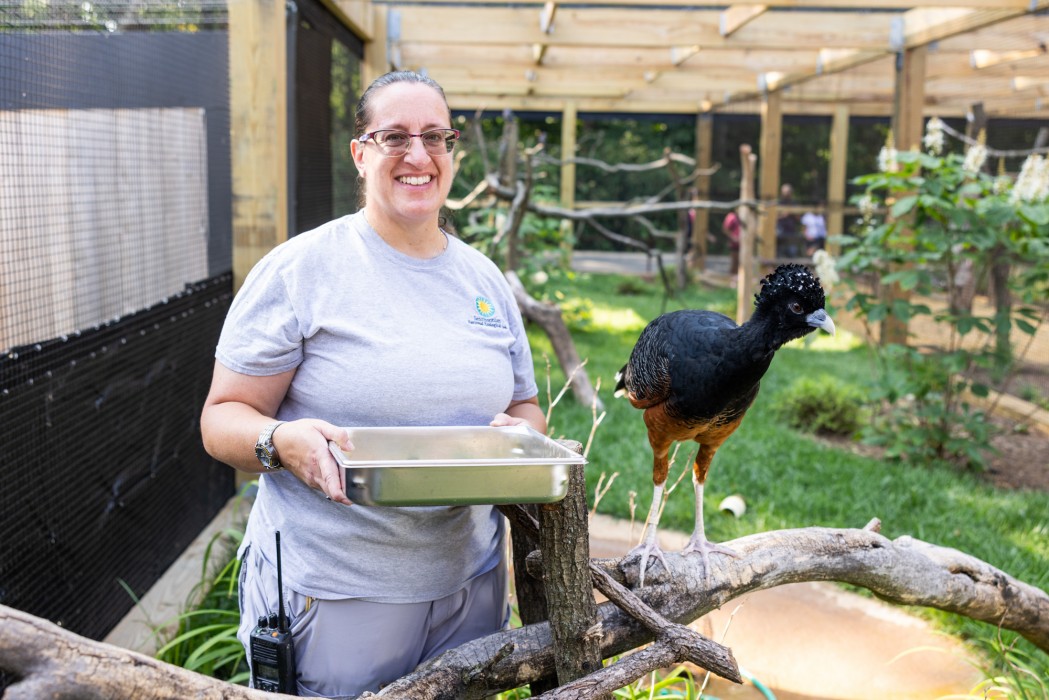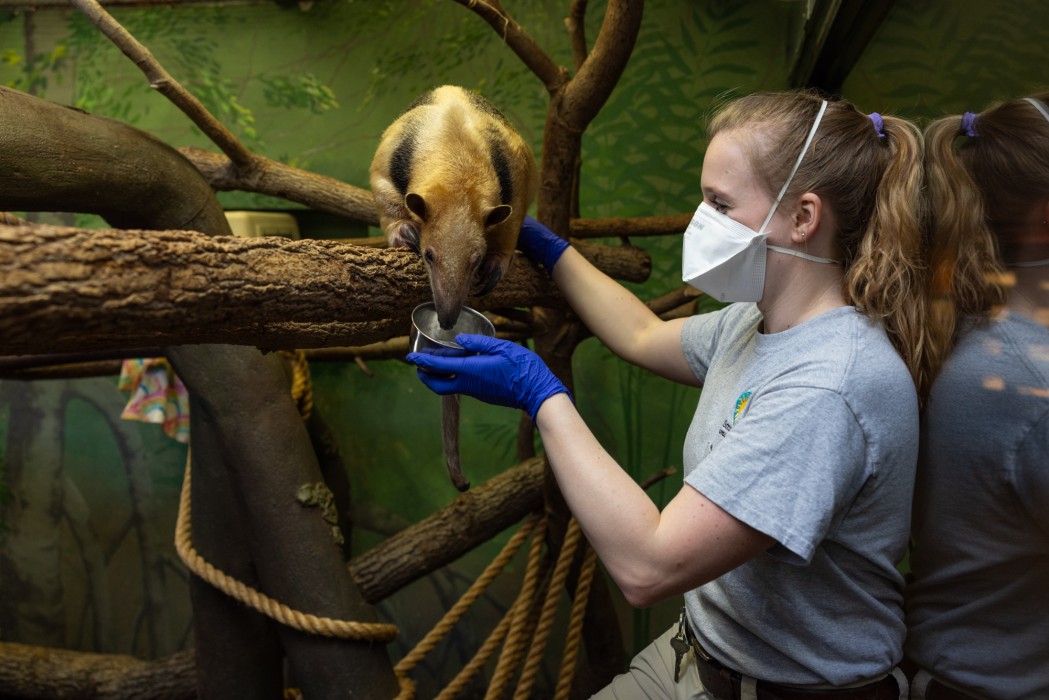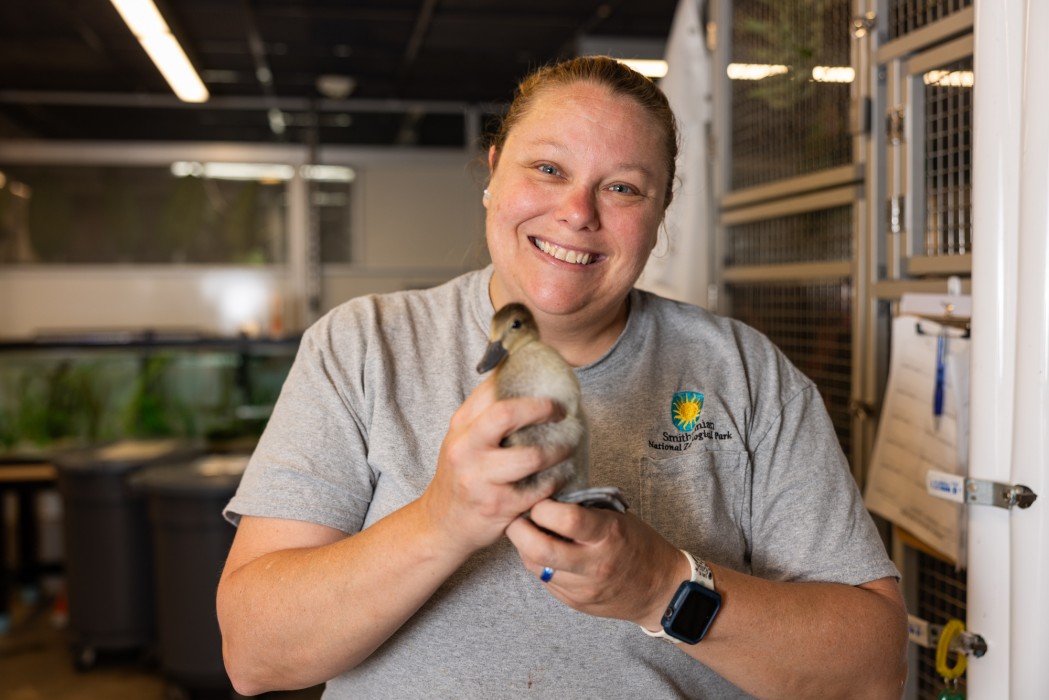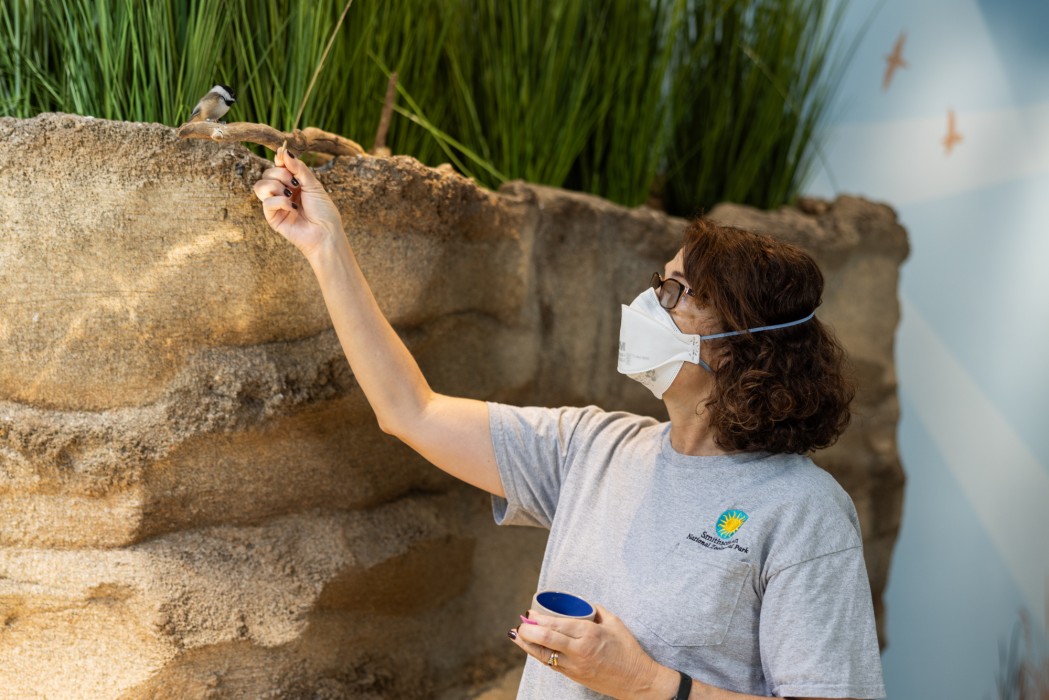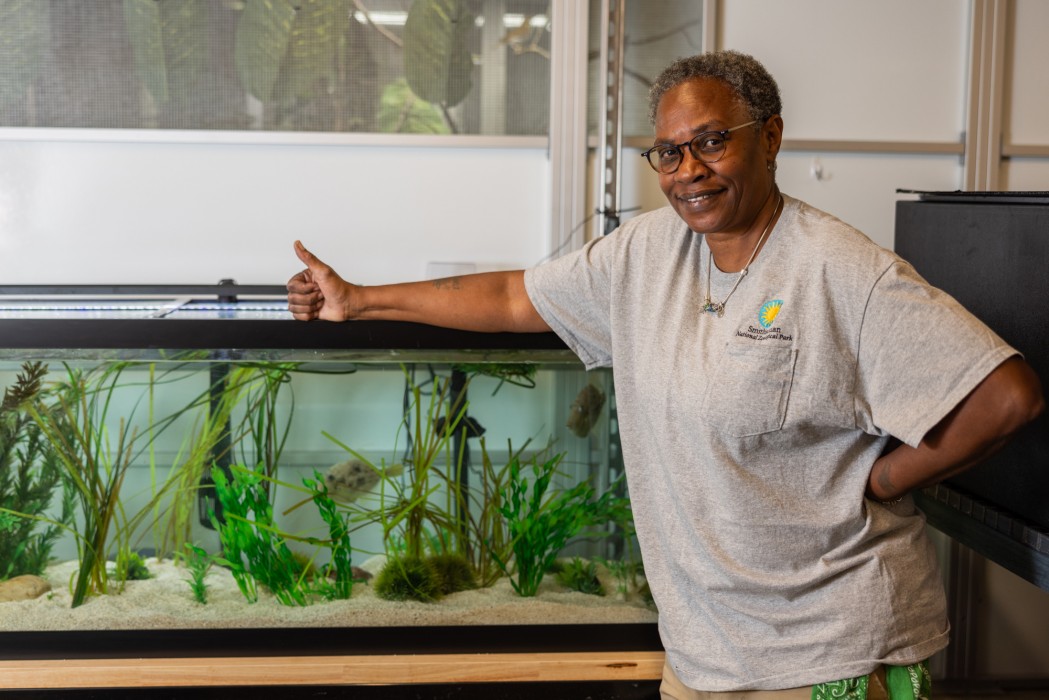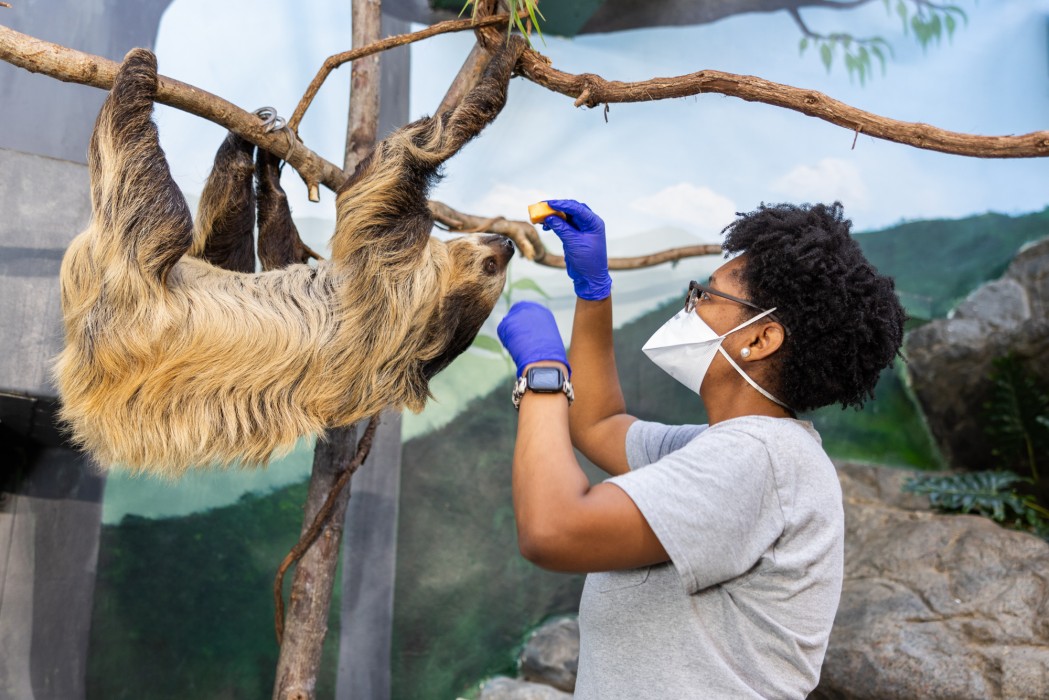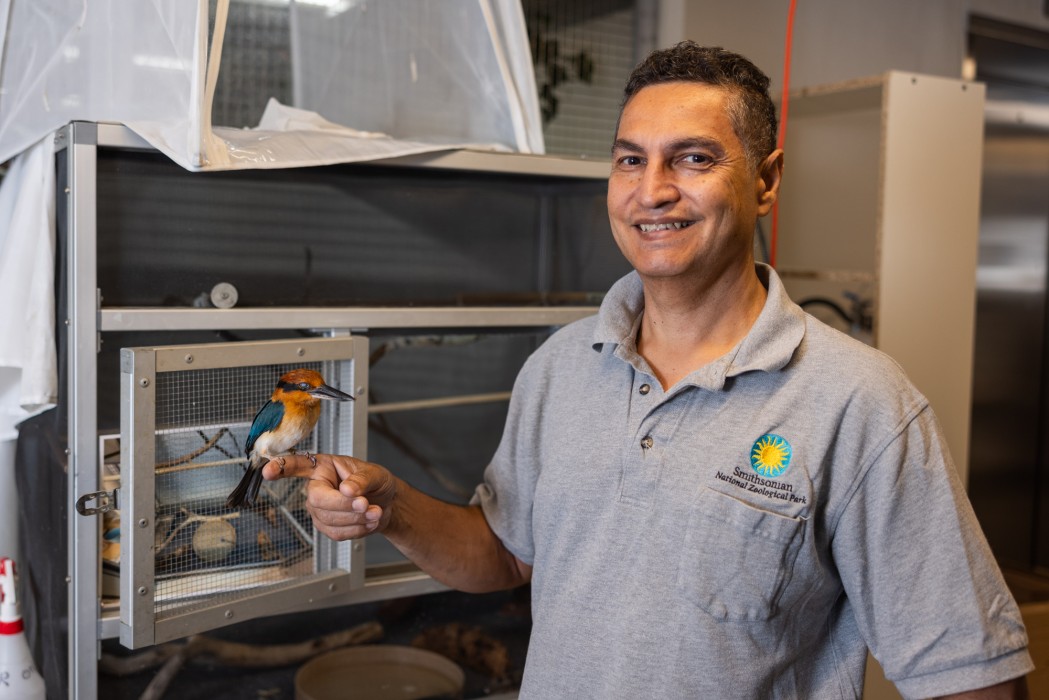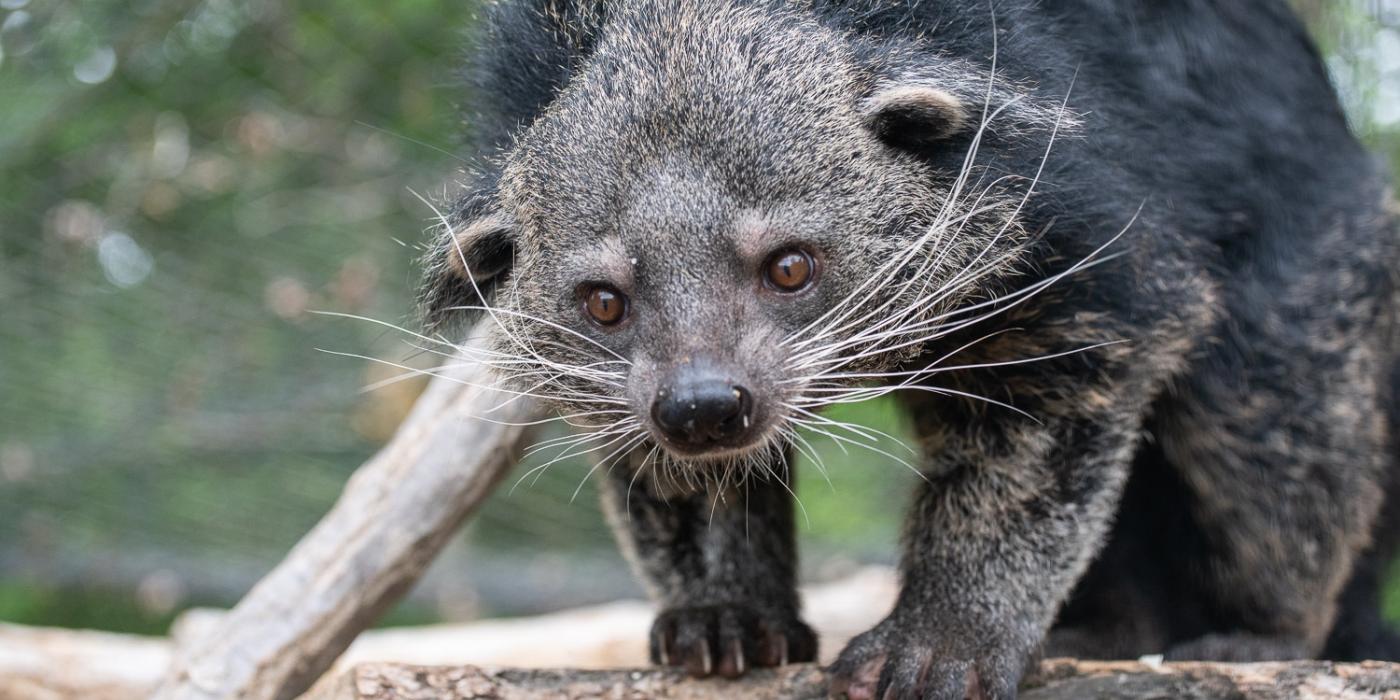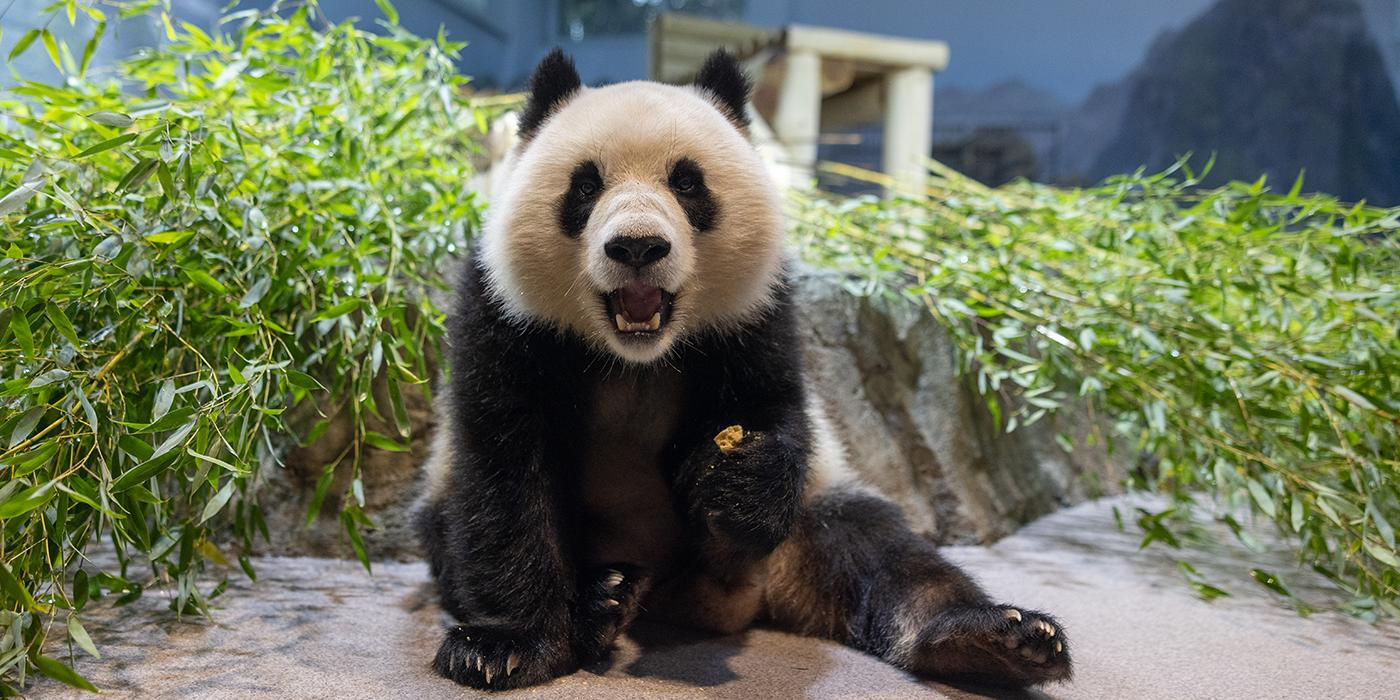New at the Zoo: Meet Hereford Calf Willow!
There’s a new, adorable face at Kids’ Farm—an 11-month-old Hereford calf named Willow! Over the past few weeks, she has been frolicking around the barnyard with Hereford heifer Rose and Holstein calf Magnolia (a.k.a. Maggie). Get to know the Zoo’s newest calf in this Q&A with animal keeper Nikki Maticic.
What is the difference between Hereford and Holstein cows?
Of the 60 breeds of beef cows in North America, Herefords like Willow and Rose are among the most common. As their nickname implies, beef cattle have been bred and selected primarily for the production of meat.
Compared to Holstein (dairy) cattle like Maggie, beef cattle have shorter legs and stockier bodies. Fully grown, Hereford cattle weigh up to 1,500 pounds, but Holsteins—the largest breed of cattle—can weigh up to 1,870 pounds.
Do they get along?
Rose and Maggie can often be found resting together in the barnyard and grooming one another, so we hope that they will develop a similar bond with Willow. As Willow has been becoming more comfortable at the Farm, we have observed her spending lots of time grazing and eating hay with Rose and Maggie, as well as laying down all together in the sand in the afternoon.
Everyone gets along well, however, Maggie and Willow seemed to have formed the closest bond. Both will frequently be seen grazing together, interacting with enrichment and having friendly bouts of head-butting and frolicking! We are excited to watch their interactions as Willow grows.
What are their favorite foods?
So far, Willow is a big fan of sweet potato, carrots, sweet feed and browse (branches with tender shoots and leaves). We are slowly incorporating new foods into her diet to assess what her favorite fruits and vegetables are.
Rose can be somewhat of a picky eater. Hay and browse seem to be her favorites, but she also has a taste for hay cubes and sweet potato.
Maggie has an adventurous palate—she enjoys many different varieties of fruits and vegetables, her favorites being apples, bananas, oranges, carrots, beets and sweet potatoes. She will gobble up browse, hay cubes and grain, too.
Ensuring the cows have enough grass to graze on is one of the most challenging aspects of caring for them. With so many hooves moving around the yard, we section off areas in the summer to give the grass a chance to grow. When we open up that section of the yard, the cows and alpacas will spend several hours grazing on the fresh grass.
One of my favorite facts about cows is that they have four stomachs: the reticulum, the abomasum, the omasum and the rumen!Related Species:

